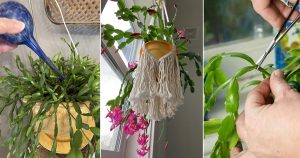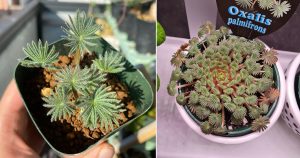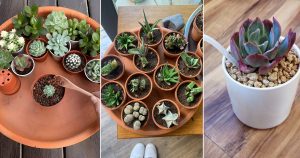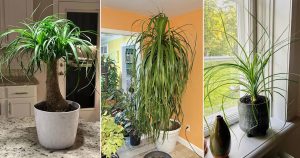In love with Royle’s Spurge just after seeing it once? Well, you can have it too with this growing guide on Euphorbia royleana!
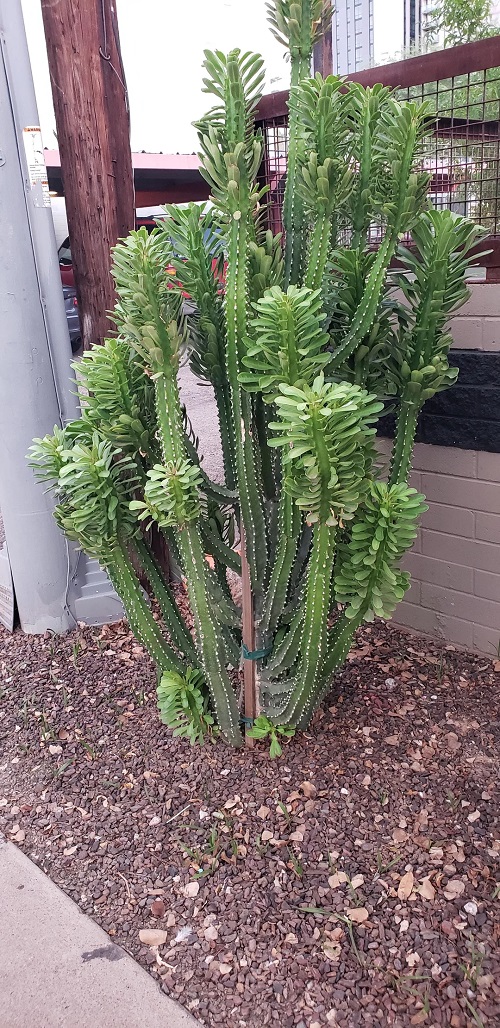
Mostly found in specific regions of South Asia like India and Pakistan, this bushy succulent survives best in arid and semi-arid environments around the world. If you plan to grow it indoors or even just in your garden, you must know the specifics of Euphorbia royleana care and growing tips.
Euphorbia royleana—Key Facts
| Botanical Name | Euphorbia royleana |
| Common Name | Royle’s Spurge, Sullu Spurge, Himalayan Spurge |
| Bloom Season | Spring to early summer |
| Dormancy | Winter dormant |
| Flower Color | Yellow-green to reddish; small and not showy |
| Growth Rate | Moderate to fast under ideal conditions |
| USDA Zones | 9b-11 |
| Mature Size | 6 to 15 feet |
| Sun Exposure | Full sun to light partial shade |
| Watering | Low water needs |
| Pests | Mealybugs, and spider mites |
Euphorbia royleana Information
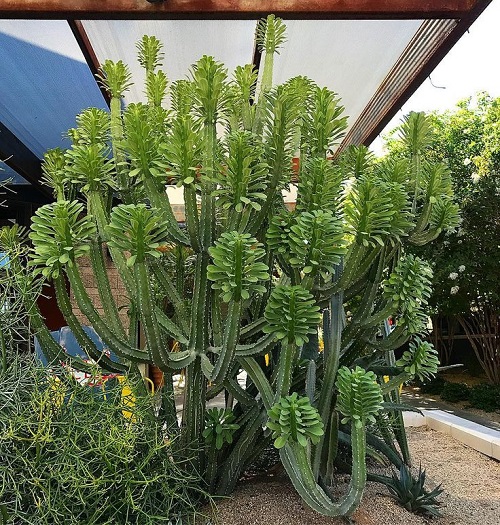
Wondering how a Himalayan native survives in your sunny balcony? Well, this tough succulent has roots in rocky, dry hillsides and knows how to handle heat and drought like a pro. In its native range, it even helps prevent soil erosion—so it’s tough and useful!
Though it looks like a cactus, it’s actually a Euphorbia, with tall, spiny stems and a milky sap that oozes when cut. That sap’s been used in traditional remedies, but is toxic—so handle with care!
In rural areas, it’s often used as a living fence, thanks to its sharp spines and fast growth.
Plant Propagation
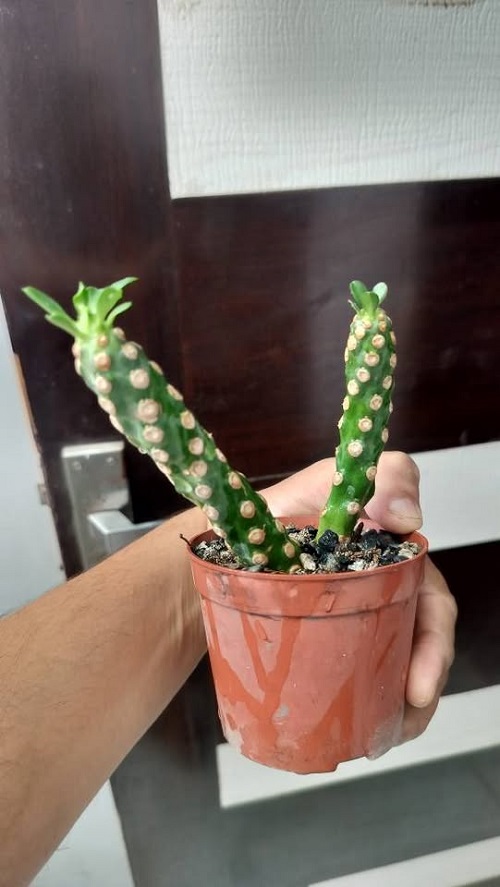
Now, there are two methods through which you can propagate this plant. The first one is through stem cuttings, and the second one is by division. First, choose healthy stems and cut them to a length of about 4-6 inches. Remove the leaves at the bottom of the stem and let the cuttings callus. After that, you can dip them in rooting hormone to speed up the process. Ensure bright, indirect light and slightly moist soil.
For division, carefully remove the parent plant from its pot and start separating the roots gently into smaller sections. Plant each of these sections in individual pots with fresh, slightly moist soil and in a location with bright but indirect light.
Euphorbia royleana Growing Requirements
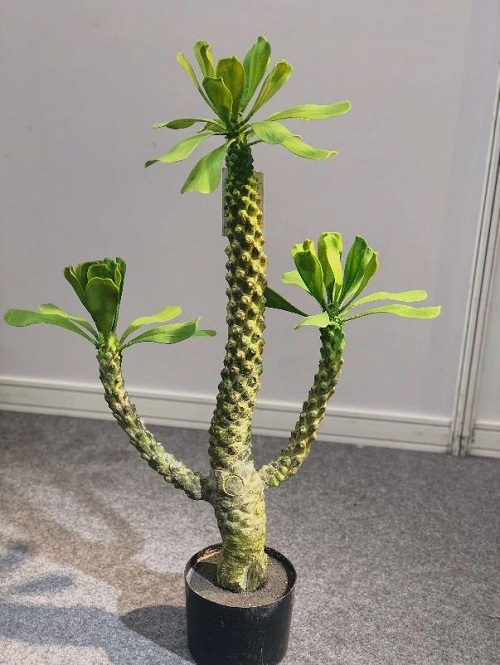
Sunlight
When it comes to sunlight, just make sure it gets bright, indirect sunlight. If you are growing it outdoors, keep it in full sun and just slight shade if the afternoon sun is too harsh.
In case you are growing it indoors, place it near your sunniest window—south-facing is ideal. Also, rotate the pot occasionally for even growth.
Soil
As with most succulents, the ideal soil for Euphorbia royleana is well-draining and well-aerated mix. This plant does best in soil with a neutral to slightly alkaline pH level and one that is rich in nutrients but does not contain excessive organic matter.
DIY tip: Mix equal parts potting soil, sand, and perlite for perfect drainage.
Watering
Check the soil before watering—if it’s dry, it’s time for a drink. Water around the base and let excess water drain out. Avoid wetting the stems or leaves to prevent fungus.
In winter, water sparingly—watering once every 3–4 weeks is enough.
Temperature
This Euphorbia loves warmth and can handle dry heat like a champ, but hates high humidity. You just need to watch out for fungus, leaf drop, or rot in damp conditions.
If temperatures drop below 5°C (41°F), bring the plant indoors or wrap the pot with insulation material to prevent cold stress.
Euphorbia royleana Care
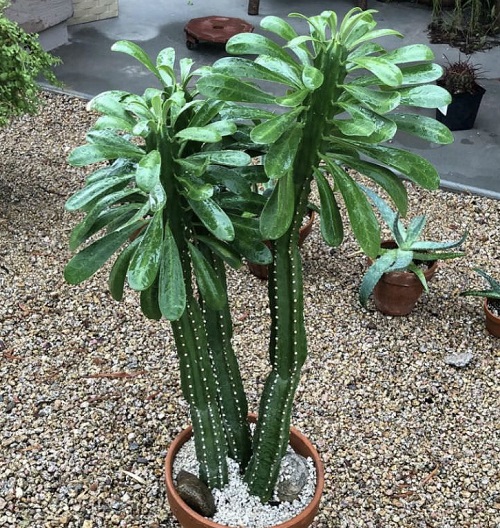
Fertilizer
It doesn’t need much feeding, but if you want to give it a boost, use a balanced 10-10-10 or 20-20-20 fertilizer once every two weeks during spring and summer.
Always keep the roots watered before fertilizing so you don’t burn them. Also, don’t overfertilize to prevent legginess, and always dilute according to the manufacturer’s instructions.
Pests and Diseases
Unfortunately, the Sullu Splurge is quite susceptible to a lot of common pests and diseases. Among diseases, you might see root rot or white molds under less-than-ideal conditions. Prune infected areas quickly to keep the disease under control.
Among pests, you might see mealybugs, spider mites, and scale insects. You can get rid of these and prevent future infestations with cotton swabs soaked in neem oil or rubbing alcohol.
You can also spray a mild insecticidal soap solution once a month as a preventive measure—especially during the hot, dry months when pests are most active.
So these were all about how you can best take care of your Euphorbia. Do you have any fun care or growing tips to share about this plant? Leave them in the comments below!

